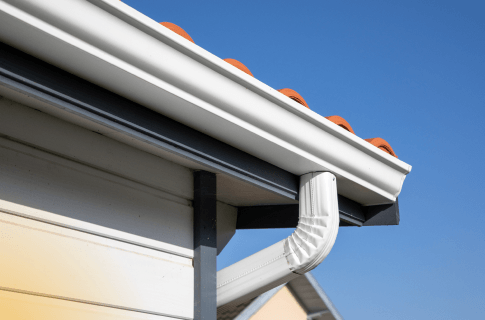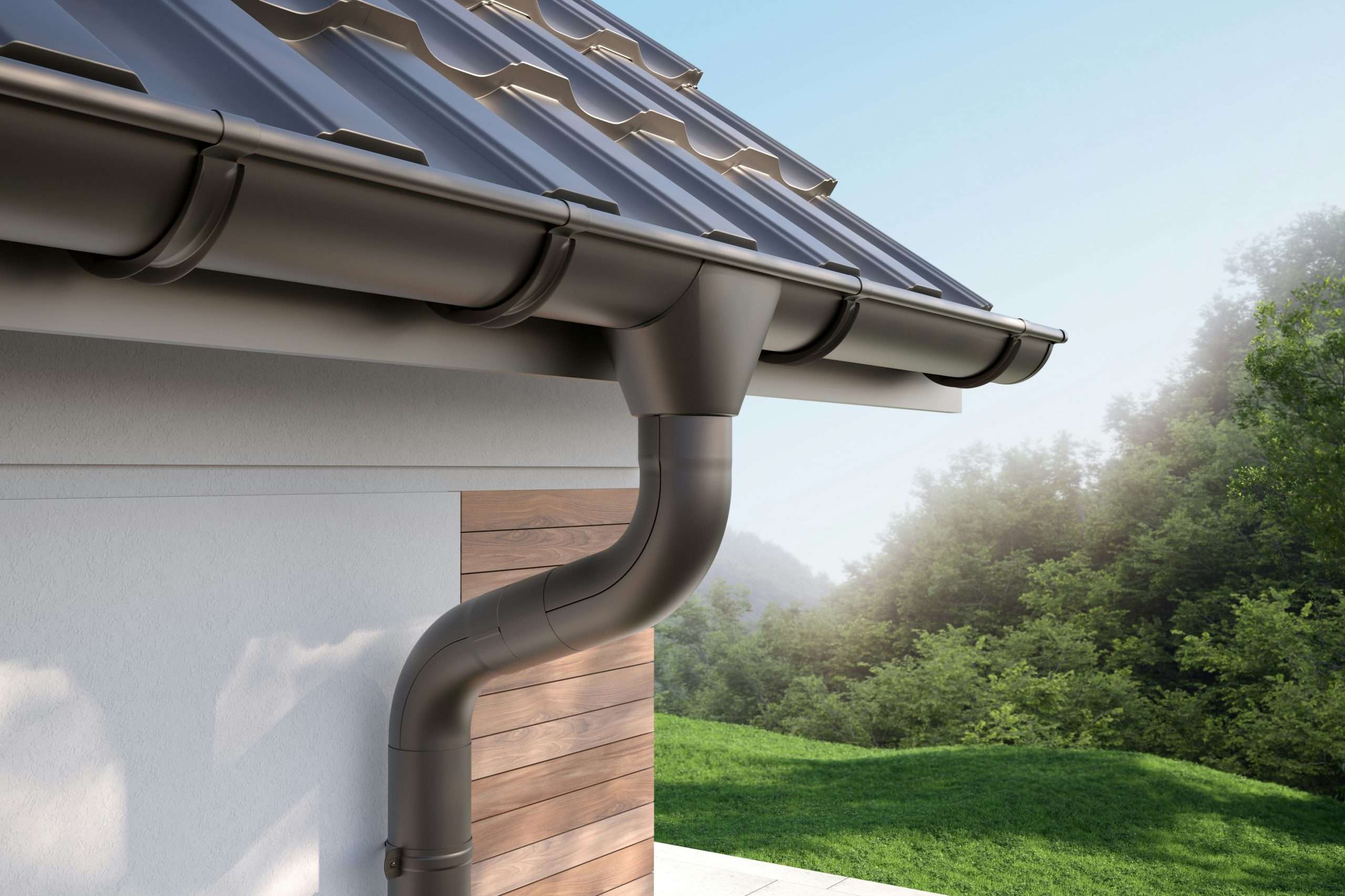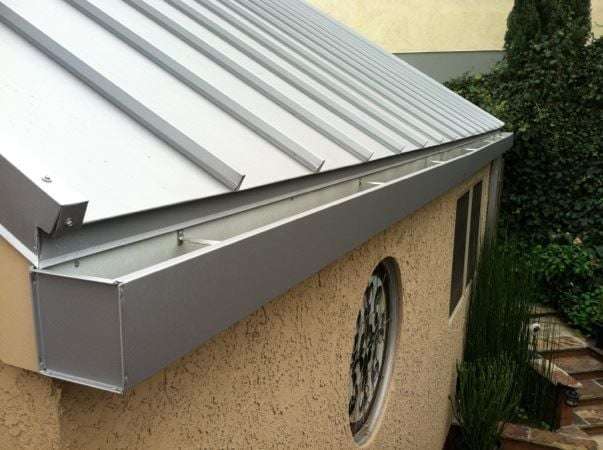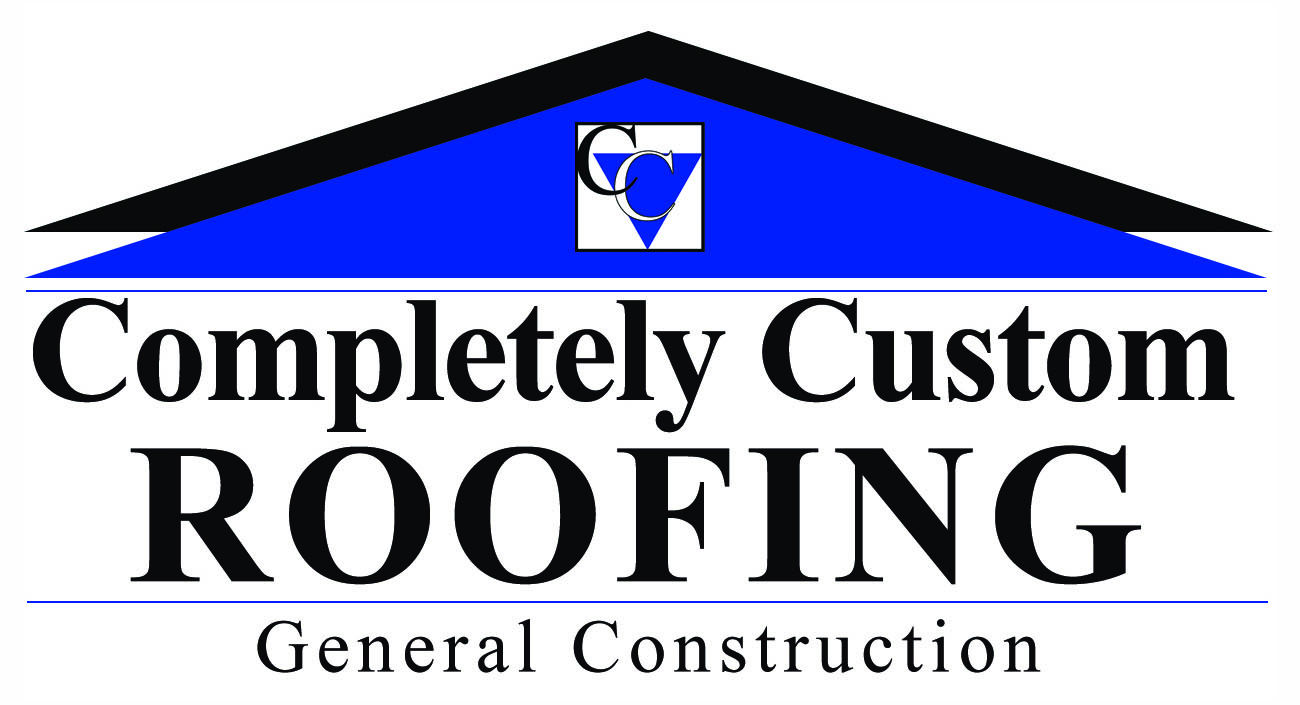Gutters serve a critical role in protecting your home from rainwater and snowmelt. Without gutters, water can pool on the roof, leading to potential damage like rot, foundation erosion, mold growth, and structural issues over time. With many colors and options to choose, they also complement your home’s aesthetic appeal and improve the overall appearance. Completely Custom provides professional gutter installation, replacement, and maintenance services to protect your home and add to that curb appeal.
Types of Gutters

K-Style
Most common type in residential homes, these have a flat bottom and decorative front.

Half Round
Semicircular and often found on older or historic homes, providing a classic look.

Box Gutters (Yankee)
Built into the structure of the home, these are less visible and can handle large volumes of water.
Materials
Aluminum
Lightweight, rust-resistant, and available in various colors.
Vinyl
Affordable and easy to install but may not be as durable as metal options.
Steel
Very durable but can rust if not properly coated.
Copper
Aesthetically pleasing and long-lasting but more expensive.
Gutter Guards
Benefits
Installing gutter guards can minimize the frequency of gutter cleaning by preventing debris such as leaves, twigs from entering the gutter while still allowing rainwater to flow freely.
Types
Mesh Screens – Easy to install and a cost effective at blocking leaves and twigs.
Foam Inserts – Made from porous foam, they are inserted directly into the gutter. The foam allows water to flow through while filtering out debris.
Surface Tension Systems – Typically made of metal and custom fitted to the gutter system, these guards use the principle of surface tension to direct water into the gutters while keeping the debris on top.
What You Need to Know
Installation
Professional vs Do It Yourself
While gutter installation seems like an easy DIY project, it requires careful planning, precise measurements, and an understanding of the specific needs of the home. Hiring a professional ensures proper installation and alignment.
Pre-planning
The first step to gutter installation is to gather the necessary materials and tools. The type of gutter system should align with the weather conditions of the area and the material options should be discussed.
Measurements & Slope
Accurate measurements must be taken to determine the length of the gutters required. This involves measuring the eaves and accounting for corners or angles.
It is also crucial that the gutters have a slight slope of typically 1/4 inch for every 10 feet, to allow water to flow towards the downspouts efficiently.
Securing & Alignment
A critical step of installation is making sure that the system is securely fastened and properly aligned. This not only affects water flow but also prevents sagging and potential damage over time.
Maintenance
Cleaning
Routine cleaning should be done at least twice a year – once in the spring and once in the fall.
To clean the gutters remove large debris by hand followed by flushing water from a hose to clear out smaller particles for free water flow.
Inspections
When cleaning your gutters it is important to check for rust spots, cracks, or holes that may have developed and can lead to future leaks.
Repairs
It is a good idea to repair any major damage before the change of the season. Additionally, it is advisable to check the pitch of your gutters regularly and reposition brackets or add support to ensure a consistent slope.
Preventative Measures
During winter months, it’s vital to monitor gutters for ice buildup. Ice dams can form when snow melts and refreezes in the gutters preventing proper drainage.
Signs of Problems
Water Overflowing
One of the most immediate signs of gutter issues is water overflowing from the edges of the gutters during a rainstorm. This can occur due to debris clogs.
Stains on Exterior Walls
Dark streaks or stains on the exterior walls of your home, may indicate that your home has had prolonged exposure to water spilling over from the gutters.
Sagging or Pulling Gutters
Gutters that are sagging or pulling away from the home indicate a clear problem. This can be due to the weight of accumulated debris, water, or ice during winter months.
Pooling Water
Ineffective gutter drainage can cause standing pools of water around the base of your home after it rains and can lead to flooding.
Rust or Corrosion
If your gutters are made of metal, signs of rust or corrosion can indicate that they are deteriorating.
Peeling Paint or Mold Growth
The presence of peeling paint or mold on the soffits or fascia boards directly beneath the roofline can signal that water is not being properly channeled away from your home.
Insect Infestations
If you notice an increase in insects, particularly mosquitoes or ants, near your gutters, this could suggest standing water due to clogs or overflow.
